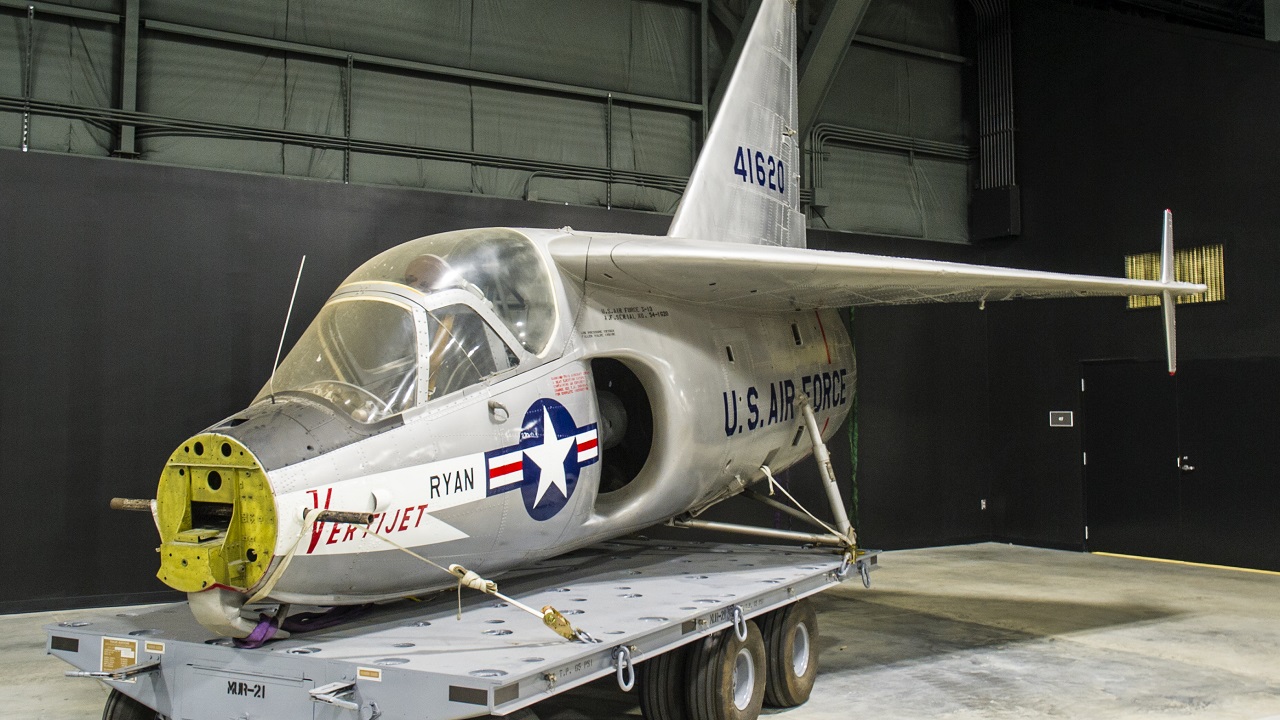Vertical take-off and landing, what we call VTOL for short, is an excellent capability for any military to have. And while the U.S. military has it now, there was a clear path to getting there. The X-13 is a big part of that journey. The F-35B clearly appreciates it: We are used to airplanes that take off horizontally and land horizontally. But the U.S. Air Force actually had an aircraft that took off and landed from a vertical position from a mobile launch platform in the manner of a rocket.
This was the 1950s and the beginning of vertical take-off and landing (VTOL) without the need for a runway. The craft was called the Ryan X-13 Vertijet and it had a stubby little buddy with a less than stellar history, but it was the precursor to VTOL flight and thus had its uses as an experimental airplane.
The X-13 Was No Record Setter
The X-13 Vertijet was small and weighed only 7,200 pounds. It would win no speed records, as this aircraft could only do 350 miles per hour. A Rolls Royse Avon engine gave it 10,000 pounds of thrust with a short ceiling of 20,000 feet.
It Actually Worked
The X-13’s high water mark came in 1957 when it successfully launched at Edwards Air Force Base, California. The airplane took off vertically from its launch platform while sitting on its tail, leveled out horizontally, flew for several minutes, then went vertical and landed like a dart on its rear. It made a few more demonstration flights on the east coast. The X-13 wouldn’t be able to intercept enemy fighters. The specs weren’t impressive, and it was never going to have the kind of performance that could be used for anything other than a test bed.
You Don’t Need a Horizontal Air Strip
There were two X-13s built between 1955 and 1958. The idea was that in a nuclear war, all airfields and landing strips would be destroyed and horizontal take-off would be impossible. What could maybe survive would be VTOL airplanes sent into the air with a mobile launcher without the need for an airstrip.
You Don’t Need An Aircraft Carrier
VTOL was thus an important capability that could lead to the survivability of an aircraft. A fleet of VTOLs would not need aircraft carriers with long decks that required horizontally-launched catapults and arresting cables.
Could You Launch an Airplane Vertically?
The designers at Ryan had been working on VTOL since the end of World War Two. They had an aircraft called the FR-1 Fireball and wanted it to take off vertically. In 1947, the navy gave Ryan a contract to investigate the possibility. These experiments became known as tail-sitting airplanes with counter-rotating propellers.
There’s a ‘Beast’ in this “Backyard’
This was early VTOL innovation. Ryan designers, and those at Lockheed and Convair, thought that maybe airplanes could launch on smaller vessels other than aircraft carriers. Ryan tried to prove this with a concept craft called the “Beast in the Backyard.” This was an unmanned demonstrator that could hover and first flew in 1950. They consulted a test pilot to see if the beast could someday launch vertically.
Test Pilot Rated It a Thumbs Up
In 1953, a test pilot named Peter Girard made the first VTOL hovering flight. The Navy lost interest and the program ran out of money until the Air Force came along and was attracted to the concept. The service branch ordered two VTOL tail-sitters from Ryan, and these were to become the X-13 Vertijets.
By 1956, the X-13s were ready for launch and Girard took one up again successfully. The whole launch contraption was surprisingly simple. The X-13 hung from a cable and was “suspended by two arms on the top of the trailer, with a partially retractable hook. For vertical operations, a flat bumper replaced each of the main wheels on the fixed landing gear, which kept the underside of the fuselage from damage if it swung into the bed of the trailer,” according to the Smithsonian Air and Space Museum.
It Led to Bigger Innovations
The X-13 was ahead of its time and led to the development of Hawker Harrier jump jets and the F-35B VSTOL. The vertical landing of a tail sitter may have inspired Elon Musk and SpaceX to try landing a rocket vertically on its tail after flight. Nevertheless, the X-13 had some usefulness during its short heyday and helped bring in more research and development dollars and interest for VTOL flight.
Now serving as 1945’s Defense and National Security Editor, Brent M. Eastwood, PhD, is the author of Humans, Machines, and Data: Future Trends in Warfare. He is an Emerging Threats expert and former U.S. Army Infantry officer. You can follow him on Twitter @BMEastwood.

